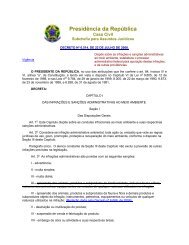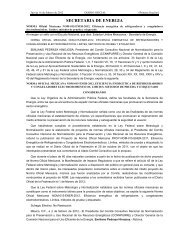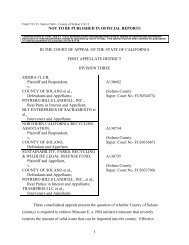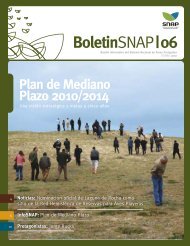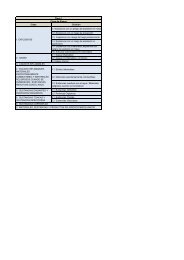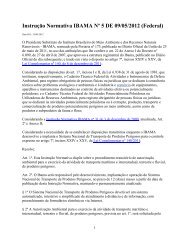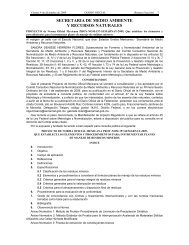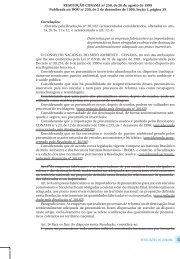OceAn science OceAn science OceAn science
OceAn science OceAn science OceAn science
OceAn science OceAn science OceAn science
You also want an ePaper? Increase the reach of your titles
YUMPU automatically turns print PDFs into web optimized ePapers that Google loves.
ary ocean observing, and in optical and bio-optical sensors in support of existing satellite<br />
“ocean color” data and new space-based biological and biogeochemical observations. Such<br />
advancements will provide information at temporal and spatial scales not presently available<br />
through any one agency’s observing capabilities. Agency contributions to address this<br />
priority include:<br />
• NSF—Develop in situ ocean sensing systems, emphasizing chemical sensors for<br />
high-priority compounds such as nutrients, biological sensors for real-time ecosystem<br />
analysis, and physical sensors that enable better understanding of transport and<br />
fluid velocity. Develop associated technologies such as cyberinfrastructure tools (to<br />
link sensors in a broad network context) and advanced power-generation capabilities.<br />
• NASA—Improve existing space-based, open-ocean, remote-sensing capabilities of<br />
biological and biogeochemical properties (and future satellite sensor capabilities in<br />
optically complex or coastal waters) by assessing accuracies in remote-sensing, optical,<br />
and bio-optical sensor calibration and validation data-collection activities. Develop<br />
next-generation optical and bio-optical field sensors and satellite data products<br />
that test new technological and methodological approaches.<br />
• NOAA—Develop genomic libraries to advance understanding of ecosystem processes,<br />
as well as species abundance and distribution. Develop in situ sensors for rapid<br />
detection of pathogens, harmful algae, and toxins, and methods to integrate biosensor<br />
data with other ocean observations. Develop genomic and proteomic tools and<br />
supporting bioinformatics infrastructure to elucidate effects of multiple environmental<br />
stressors on marine organisms. Improve video plankton recorders for recruitment<br />
process studies.<br />
Collaborative Efforts<br />
Improving existing in situ sensors and developing new sensors requires the participation<br />
of engineering and research communities. Research communities will validate the<br />
new and improved measurements. Application of the data gained from these advances<br />
in sensors will be undertaken through the coordinated efforts of researchers and resource<br />
managers. Genomic, in situ biological, chemical, and bio-optical field observations, remote<br />
sensing, and numerical models will be combined into diagnostic tools for regional<br />
to global investigations and linked with the developing coastal and offshore observatory<br />
efforts to maximize stakeholder participation, input, and use of the advances. Communities<br />
will be engaged through a variety of mechanisms, including planning workshops and<br />
peer-reviewed research solicitations.<br />
79




